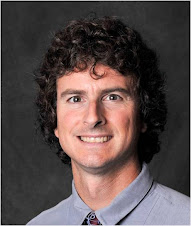David Haydter
After MSIA graduate David Haydter returned to his current home in Virginia after Residency 2010, he mentioned in an email that he’d received an award for his IT/IA work in Estonia. We asked him for details, and here’s his story.
As for the award, there were three parts to it. As the Information Management Officer (IMO) at American Embassy Tallinn, Estonia, I supervised six people and was ultimately responsible for all IT, IT security, and communications at the Embassy. The Department of State uses software to monitor all its subnets (over 400 of them), collect metrics, and to determine the overall network risk and health of each subnet. Tallinn consistently ranked number one out of all the Department's domestic offices and foreign missions for its network risk score. This means our patches are applied immediately, our virus definitions are up to date, our security templates are current, permissions, user accounts, registry settings, etc. are all exactly where they should be. My staff deserves the credit, and I wrote them a separate award which was presented by our Ambassador.
The second part was for the installation of a new messaging (aka telegrams or cables) system which replaced our legacy system from the early 1990s. Embassy Tallinn was the only mission to successfully install, learn and administer the application, and train its users without flying in outside support. The third part of the award was not IT or IA related. The award was a Superior Honor Award which had to be approved in Washington (as opposed to other awards which can be approved at the Embassy level) and signed by an assistant secretary. Normally, it would then be presented by our Ambassador. In this case, Secretary Clinton was in town for a NATO summit, and the Ambassador arranged for her to present it to me.
I was in Estonia for three years from 2007-2010. It is a beautiful country and has come a long way since the fall of communism. It sits against the Baltic Sea only 50 or so kilometers South of Finland and has a magical old town full of medieval castles. The winters are very cold, but I know Vermont gets its fair share too! Being so far north, the days are extremely short in the winter time (only about five hours of daylight) but long in the summer. The sun doesn't set until around 11:00 p.m. in June and July and it doesn't get completely dark. The song festival happens every five years - it just happened this year and was a great experience. [ed. Learn more at http://www.estemb.org/estonia/estonian_song_and_dance_festival ]. There's also a lot of knitting. There are several shops, mostly in old town, that sell knitted items to the many tourists that come to town.
There was no base - just the Embassy in the middle of the city. We lived amongst the Estonians and were immersed in their culture. Very few State Department Missions (Embassies, consulates, U.S. Missions) have a base-type setup. Our neighbors are typically citizens of the host nation, and we eat, shop and play just as they do. This is what makes the Foreign Service so interesting.
Last Week’s Quiz Question
In what year was the Ticonderoga moved to the Shelburne Museum?
Answer: 1955
Winner: William R. Lampe
This Week’s Quiz Question
In what year did Norwich University start the first Civil Engineering program in the US?
Past winners |
Andrey N. Chernyaev: 5 wins |
Bill Lampe: 4 wins Matt Bambrick: 3 wins |
Dianne Tarpy: 2 wins |
Scott Madden: 2 wins |
Sam Moore |
Autumn Crossett |
Gil Varney, Jr. |
Glen Calvo |
Thomas Reardon |
Sherryl Fraser |
Srinivas Chandrasekar |
Marc Ariano |
Linda Rosa |
Joanna D'Aquanni |
Srinivas Bedre |
Christian Sandy |
Joseph Puchalski |
Ken Desforges |
William Westwater |

